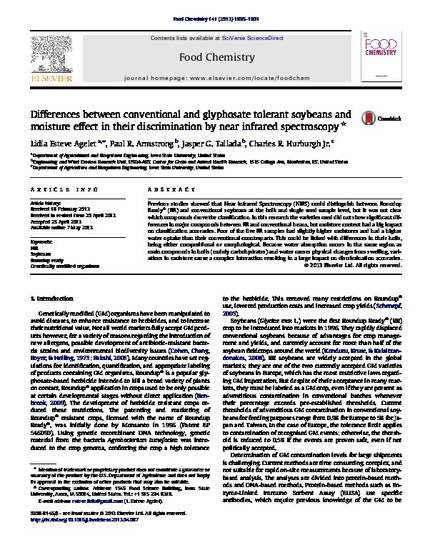
Previous studies showed that Near Infrared Spectroscopy (NIRS) could distinguish between Roundup Ready® (RR) and conventional soybeans at the bulk and single seed sample level, but it was not clear which compounds drove the classification. In this research the varieties used did not show significant differences in major compounds between RR and conventional beans, but moisture content had a big impact on classification accuracies. Four of the five RR samples had slightly higher moistures and had a higher water uptake than their conventional counterparts. This could be linked with differences in their hulls, being either compositional or morphological. Because water absorption occurs in the same region as main compounds in hulls (mainly carbohydrates) and water causes physical changes from swelling, variations in moisture cause a complex interaction resulting in a large impact on discrimination accuracies.
Available at: http://works.bepress.com/charles_hurburgh/99/

This article is from Food Chemistry 141 (2013): 1895–1901, doi:10.1016/j.foodchem.2013.04.087.